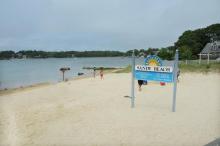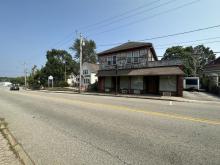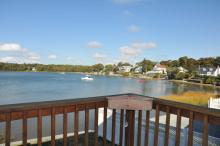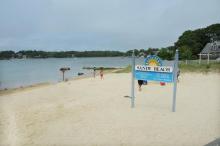New Year’s Day on the beach
Nature lovers rang in the New Year with a ramble along the beach at the Mass Audubon Allens Pond Wildlife Sanctuary. About 35 people came out to enjoy the sun and warmth (despite the high winds) and learn more about the environment from volunteer naturalist Doug Hlousek.
“The object is just to go out, enjoy the good weather, and welcome the new year,” Hlousek said.
Despite the recent wind and rain, the only real obstacle the ramblers faced were several large puddles that nearly blocked the trail. The storms had washed up a huge variety of specimens on the beach which Hlousek expertly identified and explained.
The sanctuary is unique because it contains many environments, from the beach to meadows and the salt pond.
Hlousek pointed out what appeared to be a pile of brush on top of a pole and explained it was, in fact, an osprey nest. The birds return to the same nest every year and add new material. Their nests can be up to six or eight feet tall and have been known to include odd materials like golf club. Osprey’s population has grown after being low.
Also on the rise are populations of both common and least terns which also nest at the sanctuary. Common terns nest on a large rock called “Timmy’s Rock,” while least terns nest among rocks closer to the shore.
Piping plovers also nest among the rocks by the shore. The birds’ nests are so small that people could easily step on one without noticing, necessitating the roping off of beaches.
Hlousek also taught the crowd about the glacier that created the landforms on the South Coast, Cape Cod, and islands. Cuttyhunk is easily visible, and those with good vision can see Martha’s Vineyard on a clear day.
As the group returned to the field station at the end of the hike, one rambler offered a wish for the new year: “May the rest of the year be as nice as today!”

















